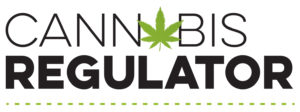While the legal cannabis industry has grown quickly, profitability can remain elusive. Name-brand companies have seen their stock prices plummet after disappointing financial reports. It is a cause of concern: when can bottom lines improve?
Some cannabis companies have fared better than others. Leading Canadian retailer High Tide announced Q2 2022 guidance showing the company’s revenue coming in at $10 million over projections. For a deeper dive into this growing, successful business, we recently spoke with High Tide Chief Revenue Officer’s Andy Palalas.
Cannabis Regulator: How did High Tide obtain positive revenue growth?
Andy Palalas: An overarching vision/strategy is essential to success, but so is setting realistic objectives.
For example, at High Tide we always knew that we wanted to aim beyond just the Canadian market. But we were cautious and methodical about scoping out realistic opportunities.
We set our sights on dominating cannabis accessories retail prior to legalization, and today we have the largest footprint of ecommerce for accessories retail in the U.S. This puts us in communication with millions of cannabis consumers in the states, in advance of federal legalization.
We also acquired two leading direct-to-consumer CBD brands in the U.S., adding a large base of cannabinoid-consuming Americans to our customer portfolio.
CR: What are the major cannabis retail trends right now?

AP: Vapes, water pipes and hand pipes are the top-selling consumption accessories in the US. In Canada, we stock the largest selection of consumption accessories in the country at our Canna Cabana locations. Thanks to our market position as a major manufacturer of these products, we are able to offer these products at unbeatable prices to our growing customer base in Canada.
Our cannabis retail stores are seeing tremendous growth in ready-to-use products like preroll and vape carts. We’re also seeing growth in large-format flower products like ounce bags.
CR: How has the company grown?
AP: We have recently been focusing on expanding our bricks-and-mortar presence in Canada.
As the market consolidates, we have become an acquirer of choice. This has let us selectively pick the best locations to acquire.
Since April 2022, have acquired:
- Boreal Cannabis, with two stores in Alberta
- Crossroads Cannabis, with four stores in Ontario
- Bud Heaven, with two stores in Ontario
- From Choom: two stores in BC and six stores in Alberta, plus one store to come in Ontario
CR: What are some cannabis retail best practices?
AP: Apart from our M&A activity, we have been growing organically within Canada at a rapid pace.
We are now the largest non-franchised cannabis retail chain in Canada. We consistently report positive adjusted EBITDA. Our same store sales are increasing month over month. Our membership club now has over 700,000 members.
This success in Canada allows us to explore international expansion opportunities responsibly.
Between all of our platforms, we now have a database of nearly three million customers who have bought consumption accessories or CBD from us. We are in contact with them regularly, and would like to sell them cannabis when it is legal. This puts us at an advantageous position for whenever U.S. legalization occurs
CR: When can we expect federal legalization in the U.S.?
AP: We realized that given the partisan polarization of U.S. Congress that federal legalization is still years away.
As such, instead of striking optionality agreements to enter B&M sales in the U.S., we have sought out immediately accretive acquisitions in the CBD and accessories space. These are acquisitions that bolster our revenue line irrespective of legalization, but also set us up with a strong customer database for when legalization eventually happens.
CR: What’s the future of cannabis retail?
AP: We were the first cannabis retailer in Canada, and possibly the world, to move towards a membership-based discount club model.
We realized through market research that the biggest opportunity for growth in Canada was to go after the roughly 50% of cannabis consumers who still purchase from the illicit market. Our research showed us that these consumers were sensitive to price and product quality, so we aligned our offerings to feature the highest-quality products available at the lowest price possible.
Kyle Swartz is editor of Cannabis Regulator. Reach him at kswartz@epgmediallc.com or on Twitter @kswartzz. Read his piece, Certifying Legal Cannabis as Safe.










